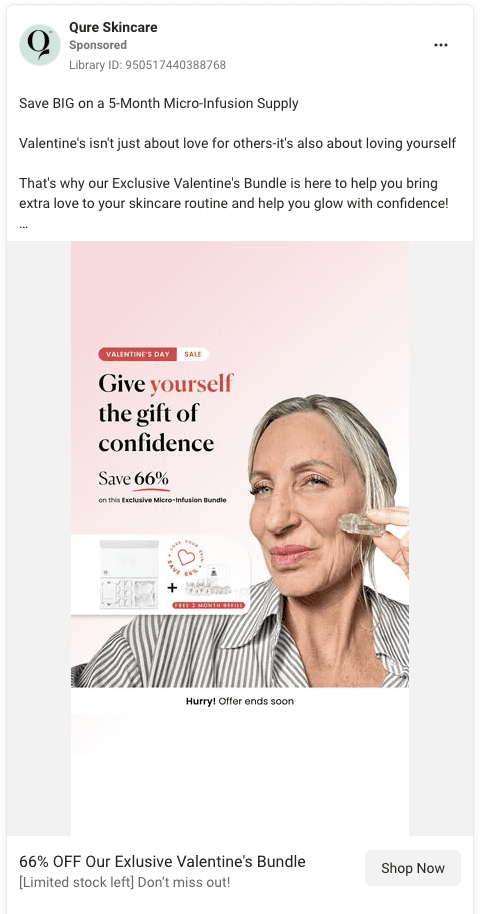Updated February 2025
You've seen them everywhere: those oddly relevant ads that seem to read your mind, showing you products you were just looking at.
You’ve probably even heard a relative say, “I think Facebook’s listening to me.”
Annoying coincidence?
No—it's strategic retargeting. And when done right, it's the most powerful weapon in your digital marketing arsenal.
TL;DR
- how to retarget
- the results you should expect
- campaign goals
- examples across Facebook Ads, Google Ads, and social media
- 29 different retargeting ad campaign types including where best to use them.
Get brand new PPC strategies straight to your inbox. 23,739 people already are!
What is retargeting & why should you care?
Retargeting is a PPC ad strategy that drops a tracking pixel in a prospect’s pocket after they show some sort of interest in your brand. As they surf around the internet, they’ll get served up an ad to remind them about how awesome you are (and that they should go back and look at your stuff again).
It works because it plays by psychological rules, pressing a persuasive button in your prospect’s brain multiple times over a period of time.
After a while, your product starts to feel familiar.
This helps conversions because, although impulsive types buy sight-unseen, the majority of responsible consumers take time to make a purchase.
Those rational second-guessers get little cozy nudges with retargeting campaigns (provided you create relevant ads). Every time an ad shows up, the objections feel smaller and your value starts to shine brighter than the price tag.
Those potential customers decide to come back to your page where the odds of a purchase are higher than before.
And that’s the goal.
Retargeting increases the odds of conversion—if you don’t push prospects away by overdoing it.
Retargeting goes like this:
- A prospect visits your site
- They leave without converting
- Later, they surf the web
- Your ad pops up
- They remember you and go back to check you out again
- They turn into a customer.
That’s retargeting in a nutshell.
Retargeting vs Remarketing
While both retargeting and remarketing promote messages to people who have already engaged with your ads or website (i.e. not new people), they differ in who they target.
Retargeting is a first-time acquisition tactic. You can think of it as building new pools of buyers to target with ads online (hence the name retargeting). Retargeting helps re-engage visitors who have previously visited your website but didn’t convert by displaying targeted ads.
Remarketing falls under customer marketing and retention. Think of it as building pools of people to market to again—because they already bought once.
The benefits of retargeting
It's a closer
Retargeting turns missed sales into second chances by reaching out to those lost conversions and inviting them back to take another look at what they might have missed.
Retargeting works smarter, not harder.
- The folks at connectIO reveal that retargeting ads are 76% more likely to get clicks than Display Ads. Growthbadger also found that people are 70% more likely to convert when they’re retargeted.
Retargeting is cheap compared to other advertising
On average, companies pay $0.66 to $1.23 per click for remarketing, making it a cost-effective form of online advertising. Compare that to the average cost-per-click (CPC) for Google search ads (in the mid-$2 range) and display ads (usually less than $1).
A ballpark Facebook ad cost for most industries is $0.26 – $0.30 per click and $1 - #3 per 1000 impressions. Unlike Google, Facebook charges advertisers based on a cost per thousand impressions (CPM) model. Because people you reach through retargeting are more familiar with you, they're more likely to engage with your ads at a higher rate.
And that means cheaper CPCs.
It's specific
You can target each visitor based on their user behavior when they visited your site the first time.
Did they land on your page, stay for less than 5 seconds, then bounce? Or did they scroll down a blog article fairly far and fill out a form to get the bonus content upgrade?
That stuff matters.
When they leave, you'll send an appropriate tracking pixel with them.
Because if you show the right ad to the right person at the proper stage of their journey, you'll win that conversion. And you know what that ad looks like for them because they showed you where they were in your funnel before they left the first time.
It goes after 97% of your lost customers
Pretty much every single person (a full 97%) who lands on one of your pages, will leave without buying the first time.
They don't know or trust you yet.
Retargeting sends them off with a party favor (tracking pixel) that attempts to win their trust over time. This effort is worth it because friends are more likely to buy than strangers.
A quick disclaimer
The stats all point out how well retargeting works. It's a lot harder, though, to actually make it work.
Now, don't get me wrong. Grouping all your visitors into one audience and hitting them with the same message can definitely get you conversions. In fact, that's what many people do.
You don't have to be perfect about retargeting, but if you’re interested in taking your efforts to the next level, then keep reading.
Retargeting strategy and campaign goals
There are two basic goals you can set for your retargeting campaigns.
Awareness retargeting
Awareness retargeting is like planting seeds in someone’s mind about your brand, even if they haven’t shown strong interest yet. It targets people who have lightly interacted with your brand—like visiting your website, watching part of a video, or clicking an ad—but didn’t take a significant action (like making a purchase).
But you aren't pushing a product on them with this top-of-funnel campaign. You're aiming to stir up some interest in your company's brand ethos—the reason your company exists—and educate them on some of the things to do with the products you offer.
Conversion retargeting
Conversion retargeting puts money in the pot. These campaigns target visitors who:
- Already know about your brand's products/services
- Left before making a purchase
For these prospects, you want them to click on any one of your display ads so they go back to your landing page. Once there, you go for the close.
But before you can go for the close, you need to get them back to your site.
And that's what these 35 different types of retargeting campaigns that we run for our own clients do
We're going to show you how you can run them too, as early as today
We'll start with ad campaign examples by network:
- Facebook Retargeting Examples
- Google Retargeting Examples
- X (previously Twitter) Retargeting Examples
Facebook retargeting ad campaign examples
Just because someone has made it to your site or even checked out a few products doesn't mean they know every reason why they should choose you over a competitor.
This is a great opportunity to lead with social proof and show your potential new customers what existing customers love about your brand.
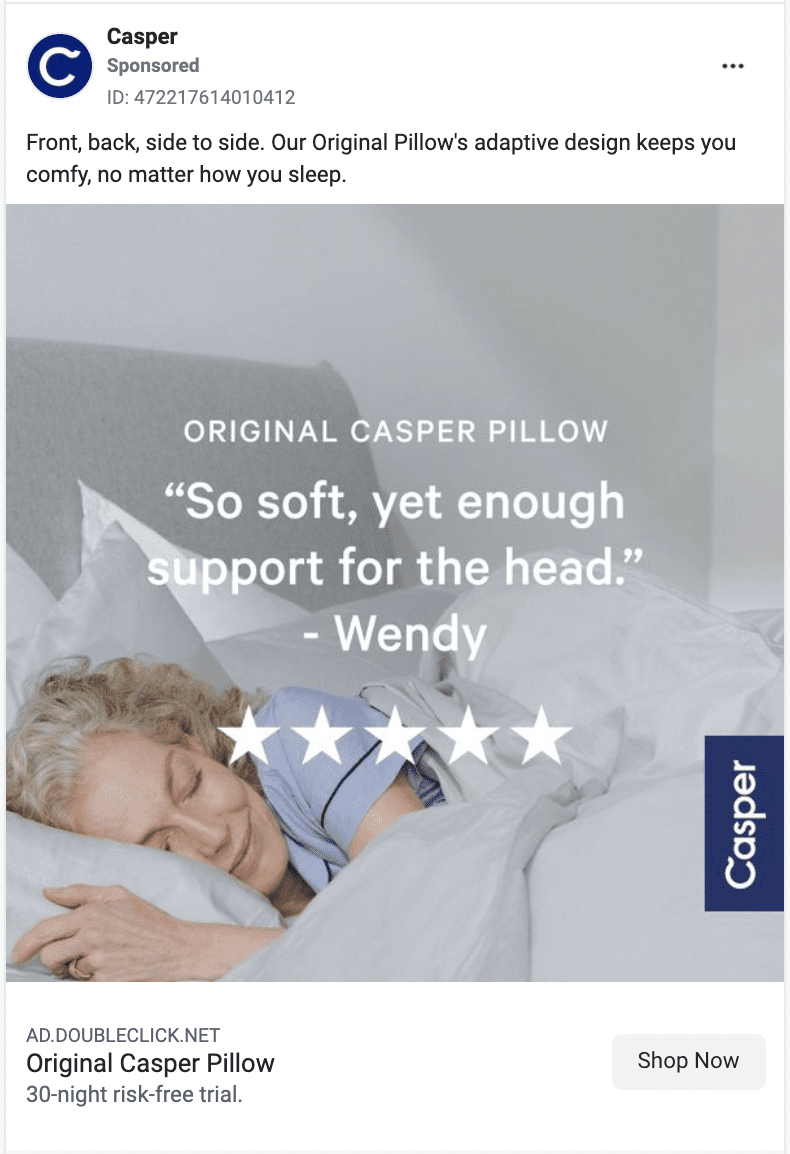
Make an offer they can't refuse
Someone visited your site. They browsed a few products. Maybe they even added a few things to their cart. But they didn’t make a purchase.
Here's your chance to put some skin in the game. Follow up with a retargeting ad and offer them a discount. These are people who already know your product well—don't be afraid to get to the point.
Bonus points for Qure Skincare since they're using a discount and bundle to incentivize multiple purchases.
Convert visitors to leads
Your retargeting ads don't always need to get an immediate transaction to be effective. Show relevant lead magnets to recent visitors if they didn't convert on their first visit so that you can move them to the next stage of your funnel.
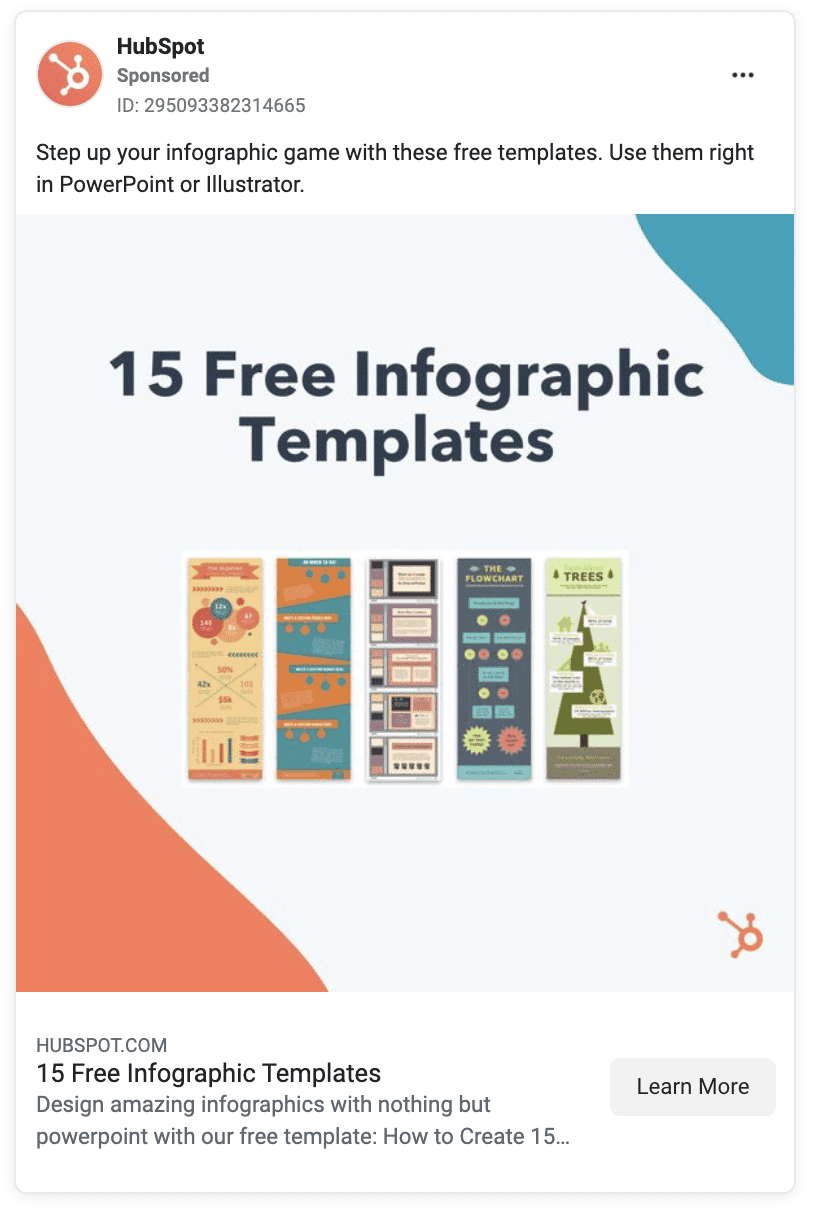
Google retargeting ad campaign examples
Follow up with visitors via Discovery Ads
Not every first-time visitor is a customer. Sometimes potential customers need more time to weigh a decision, sometimes they just get distracted.
Retarget these visitors through Discovery Ads to bring them back to your site. With Discovery ads, you can reach people on
- Gmail
- While they browse YouTube
- And through the Google Discovery feed.
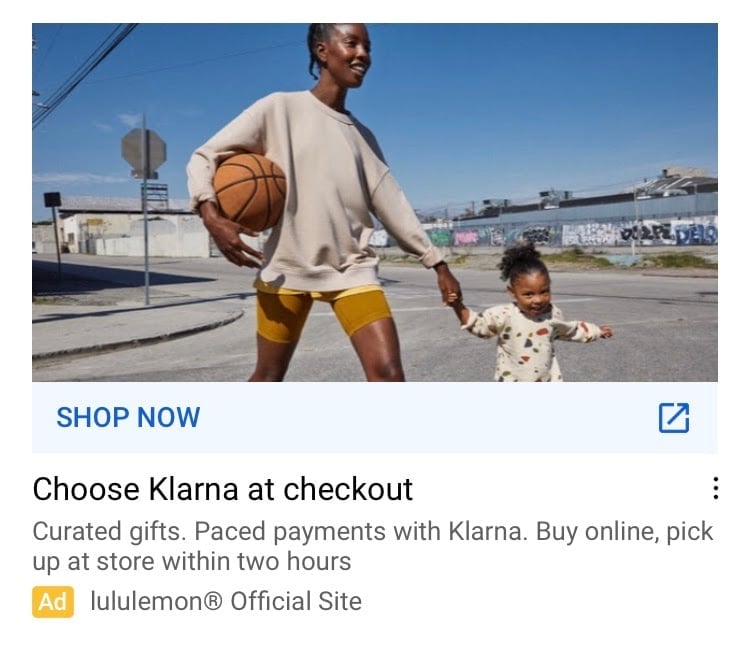
Personalize your retargeting
Showing someone an ad for a product they don't care about is a waste of time and money. Use dynamic remarketing to show your visitors ads for products they've shown interest in.

Reach customers before they go to your competitor
Bidding on competitor keywords has been a common PPC tactic for years. But experienced advertisers know that bidding on these keywords can be costly. People usually search for a specific brand for a reason, and this can translate to low conversion rates and high CPAs for the aggressive competitor keyword conquester.
That's where remarketing lists for Search ads (RLSA) comes in. With this feature, you can choose to target competitor keywords exclusively for people who've been to your website.
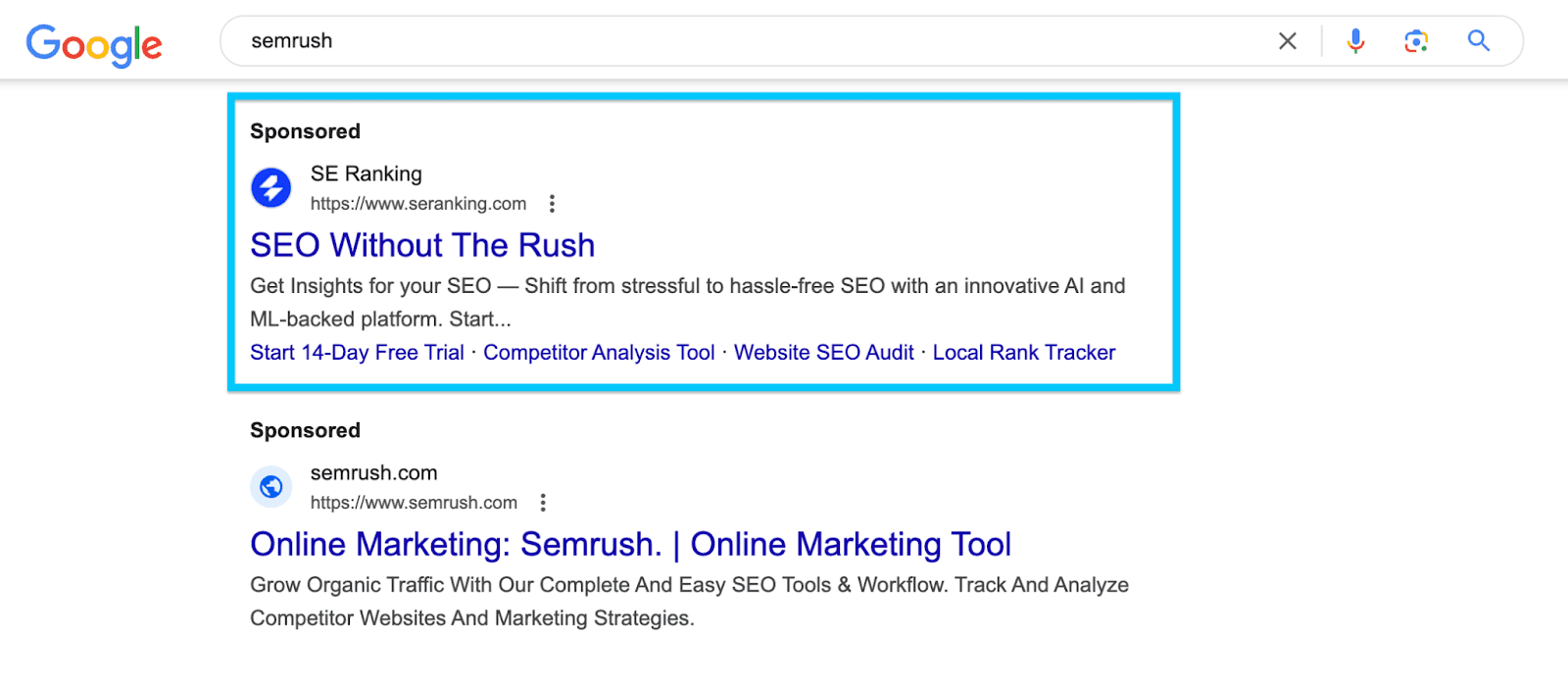
Someone who remembers you is more likely to be interested. Plus, humor wins.
Rather than throwing hefty amounts of ad spend at everyone searching for your competitor, why not have a separate strategy for the people who've shown interest in you? The right offer might nudge them over the fence.
X (previously Twitter) retargeting ad campaign examples
On X, the use cases for social media retargeting can fit almost any type of business. With X Custom Audiences, you can target
- Past website visitors
- People who have engaged with your tweets
- Cart/checkout abandoners
- Newsletter subscribers
- Existing customers
Upgrade trial customers
If your business uses a freemium model, use retargeting ads to encourage free trial members to upgrade to a paid plan.
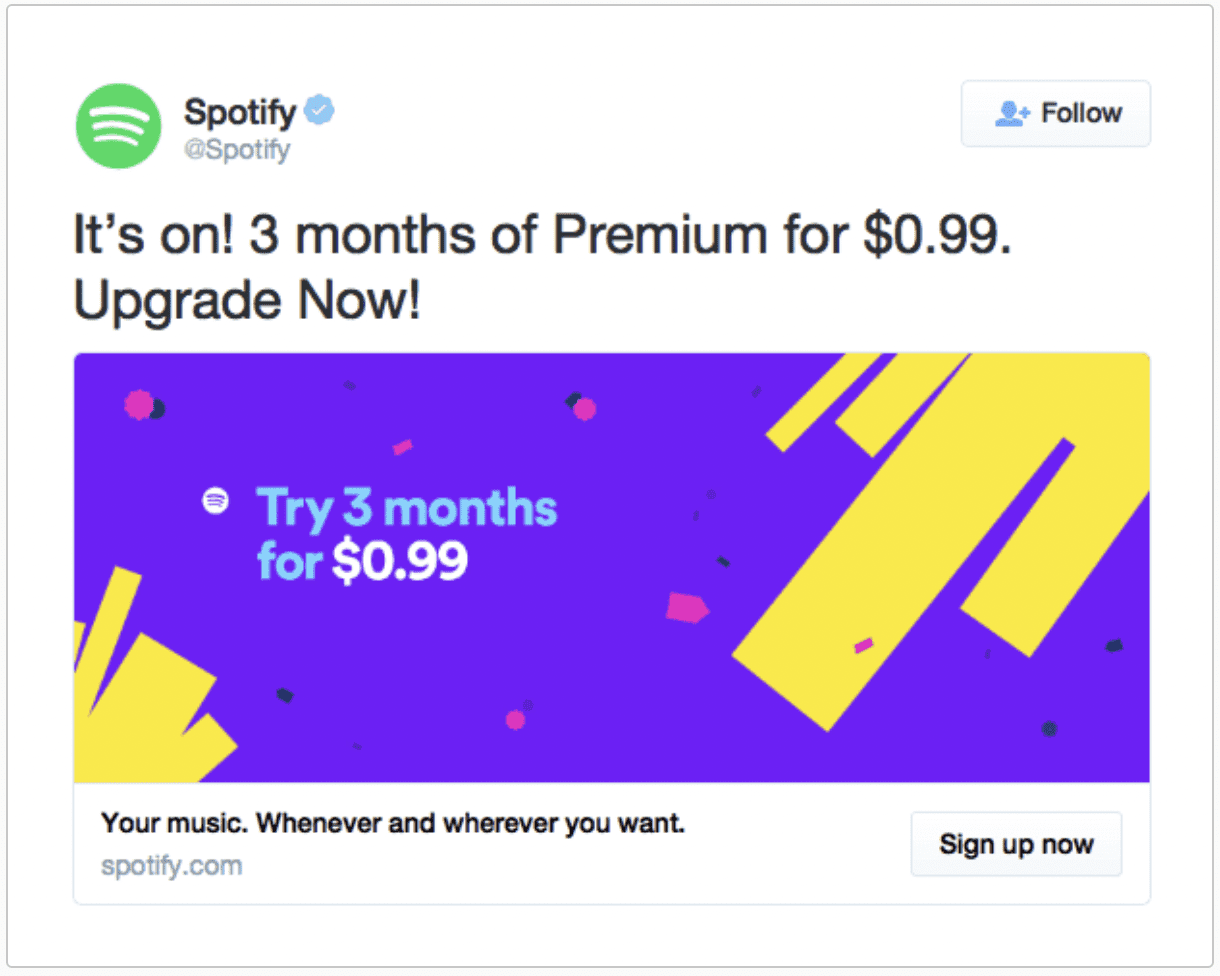
Spotify sweetens the deal with a low intro price. Plus, creating ads that are non-invasive and personalized can significantly enhance the customer experience and encourage free trial members to upgrade to a paid plan.
You'll likely be sending these customers emails about upgrading, too, but retargeting ads can be especially useful for reaching your subscribers who don't check their inbox as often.
Show existing customers new seasonal offers
Yes, it's fun to acquire new customers. But the best customers are the ones who've already bought from you. Make sure these customers are aware of new promotions you're running.
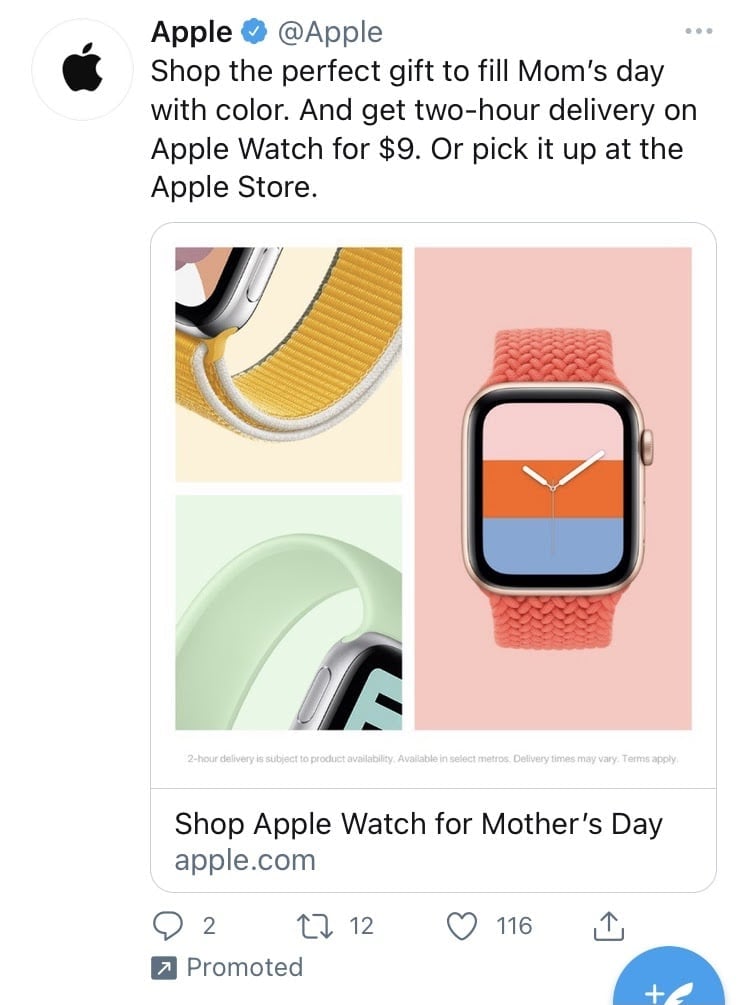
1. Sequential retargeting
Do you have a long sales cycle? Or do you have a complex buying process with multiple touchpoints? If so, then sequential retargeting could be huge for you.
Just like email nurturing pushes visitors down the conversion funnel, depending on what emails are opened and clicked through, sequential retargeting works the same way.
You group your audiences in different categories or lists and include/exclude them depending on their actions across
- Landing pages
- Durations on pages
- Downloads
A new set of ads with new messaging appears when those actions are taken. These ads get the visitor to take the next step in the conversion process while excluding them from the old set of ads.

You can use sequential retargeting to create more touch points across your buyer’s journey and better understand where your bottlenecks are in the conversion process so you can fix them.
To see what your different ads could look like, take a peek at this example from Pagewiz:
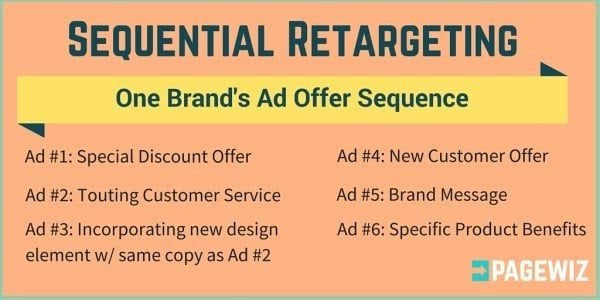
As you can see, the first ad is trying to get the sale as fast as possible. If that doesn't happen within a certain amount of time, then the sequential ads are pushed live one by one.
Sequential retargeting recap:
Sequential retargeting is the practice of varying the ad copy and messaging depending on where the visitor is in the conversion process. This fits into a broader retargeting strategy to engage potential customers throughout the marketing funnel, across channels like
- Social media
- Search
Your goal as the advertiser is to use education, features, and/or benefits to eventually get them to buy.
Best used on these networks:
- YouTube
- Google Display Network
2. Time-delayed retargeting
If you run any type of cookie/pixel-based retargeting, then there's a good chance that your audience eventually has an expiration date. For example, with GA4 cookies, specific browsers enforce limitations on the lifespan of first-party cookies if a user doesn’t make a return visit:
- 400 days for Chrome
- 7 days for Safari
But in this case, time is your friend, not your enemy.
Similar to sequential retargeting, time-delayed retargeting basically works this way without the need for action from the visitors:
- First Week: All visitors see ad #1
- Second Week: All visitors see ad #2
- Third Week: All visitors see ad #3
- Fourth Week: All visitors see ad #4
Benefits of time-delayed retargeting
The best thing about time delayed retargeting is that you don't need accompanying landing pages or collateral to back up everything your ad says. Although it won't hurt if you do.
If you only offer one service, like how our PPC agency offers PPC management, then you can use your different time-delayed retargeting ads to showcase different perks and values of working with you.
In fact, if you already have an email nurture campaign, you can take the subjects of those emails and turn them into retargeting ads. Here's an example of how we could do it since our #1 goal is to get people to request a free proposal from us.
- First Week: Example proposal
- Second Week: Screenshots of Google Ads improvements
- Third Week: Types of packages we offer
- Fourth Week: Resources of thought leadership
- Fifth Week: Case studies
- Sixth Week: Example proposal
For one of our clients, we decided to break up the audiences into monthly periods of 1-30 days and 31-60 days. Here are the results:
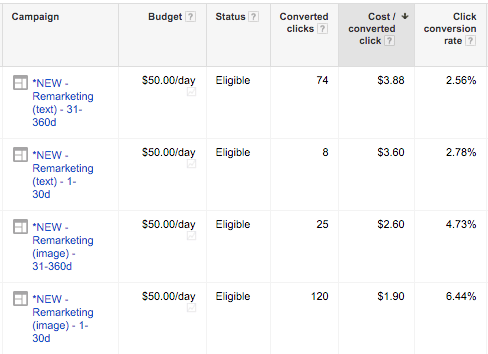
Next step would be to break it out in smaller time chunks.
As you can see, the 1-30 day campaigns and image ads are performing the best. The interesting thing is that both 1-30 and 31-60 have different offers, but none that are different in threat levels or channel temperatures.
What I mean by this is that the lead magnets in these campaigns are identical since they're both PDF guides. We could ask for a bigger conversion commitment in the 1-30 day campaigns since they have the highest performance so far.
Time-delayed retargeting recap:
The longer visitors have been part of your time delayed retargeting campaign, the bigger the offer/incentive they need to act.
You may find that for the first two weeks (depending on your conversion cycle) your ads are product/offer specific with your logo and unique value proposition.
For the next two weeks, you may offer a bonus or 10% discount to get them to act. A burn pixel can exclude past visitors who have already converted so they don't see the discount ads and complain.
Best used on these networks:
- YouTube
- Google Display Network
- X
3. Offer change retargeting
If 98% of your visitors don’t convert after their first visit, don't worry—it might be your landing page offer or call-to-action that's holding you back. Often, people don't convert because the initial offer feels too pushy, or they don't clearly see the value. Maybe they're just not ready for a free consultation yet.
Use your retargeting ads to drive more conversions when this happens. Retargeting serves as a research tool to find out if you should change your initial landing page offer.
Let's say that your initial landing page offer from search network PPC traffic is a free consultation that has a 2% conversion rate (only 2 out of 100 visitors want your consultation).
To retarget to the other 98%, pick an idea from the list below as your educational lead magnet.
Lead magnet ideas
- coupon
- checklist/cheatsheet
- quiz
- video/course
- calendar
- podcast/interview
- consult
- tickets to something
- live demo
- email course
- product giveaway
- swipe file
- info/gifographic
- free quote/plan
- white paper
- ebook
- t-shirt
- industry stats
- case study
Offer change retargeting recap:
Most people don’t convert on your site for a reason—it might be that your offer isn’t clear enough, or perhaps a different offer would resonate better.
Remember: Visitors have options, and you're not the only one who offers that product or service. Take the time and effort to educate and nurture.
Best used on these networks:
- Google Display Network
4. Up-selling retargeting
A buyer who’s already purchased is much more likely to buy again—30% of consumers prefer to shop with websites they’ve used before. Even better, repeat buyers tend to spend 5x more than first-time shoppers.
With over 2.77 billion digital shoppers worldwide, tapping into this group can unlock major growth.
Check out this email retargeting example from Amazon showing which books I should read next based on the ones I've bought in the past.
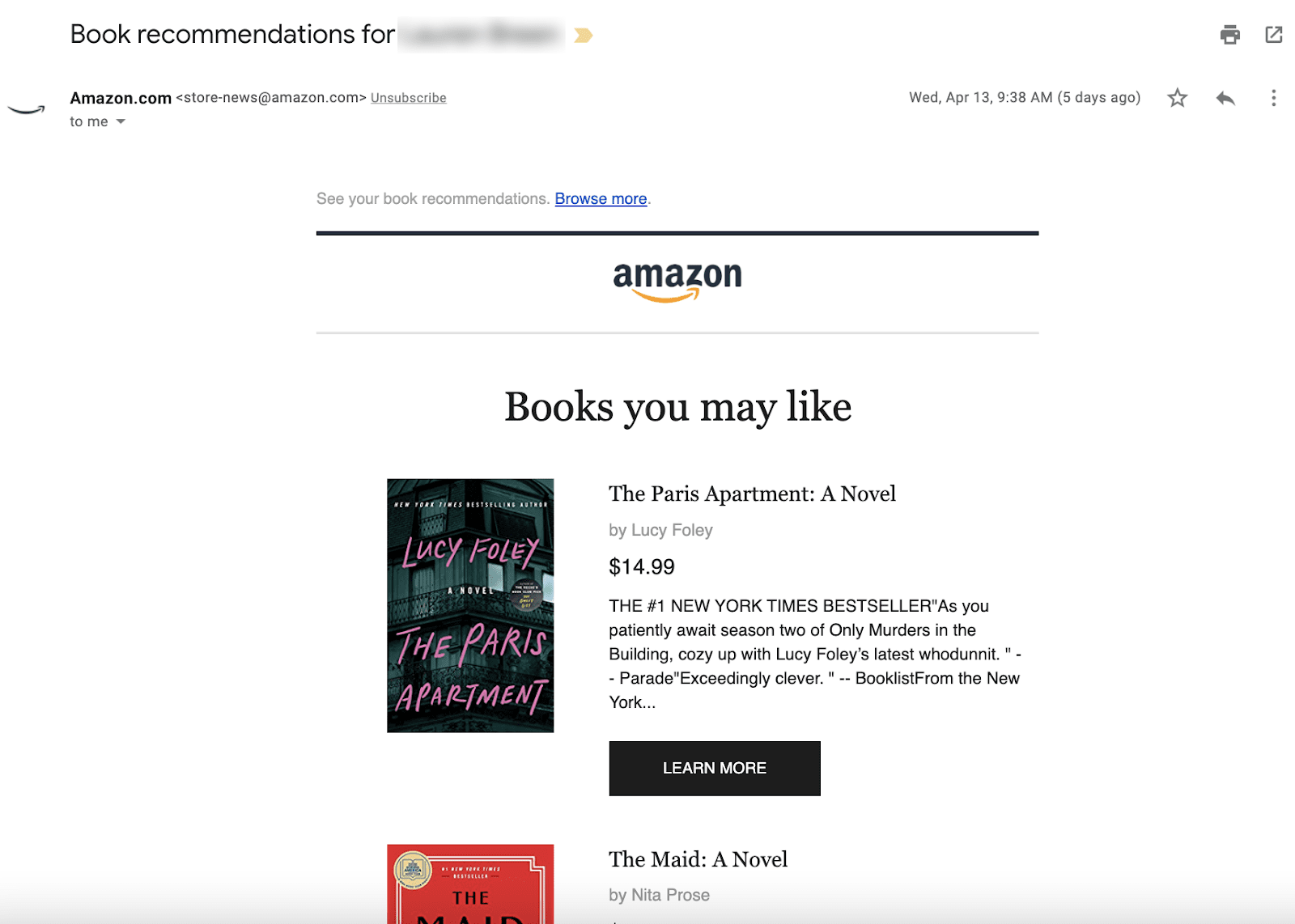
But what if you're not an eCommerce shop?
If you're in the lead generation business, then repeat buyers could mean referrals in the form of leads as you often see for service-based businesses.
You can essentially create new retargeting audiences by targeting people who have visited your thank you page with new offers in the forms of upgrades or complimentary service add-ons.
Upsell retargeting recap:
When visitors buy from you, it's because they trust you.
Don't feel greedy or ashamed to ask them to convert again and to buy something at a higher price. If your products and services bring value, they'll be upset if you keep them secret.
Best used on these networks:
- YouTube
- Google Display Network
- X
5. Search retargeting
Ever wanted to target people who have never been on your site, but searched for relevant keywords to your business?
Search retargeting allows you to do just that with image and text ads. Here's an overview of how it works from Bannersnack:
The search engine (Google, Bing, etc) is the platform that drops the retargeting cookie, which then communicates that data to the ad platform and campaigns you use to target the visitor.
Search retargeting recap:
If your business is plagued by expensive cost per clicks, then search retargeting can help you marry the keyword intent with the cheapness of a banner click.
Best used on these networks:
- Google Ads
- Microsoft Ads
6. Down-sell/cross-sell retargeting
Okay, maybe your visitors don't want to buy more from you.
If visitors don’t bite on your upsell, try offering something different. A cross-sell showcases a complementary product or service, like offering landing page services to someone who signed up for PPC services. For a down-sell, consider a lighter offer, like a free guide or “Lite” plan, to nurture them toward converting later.
Down-sell/cross-sell recap:
If someone buys an orange, up-sell a juice presser.
If someone buys the juice presser, cross-sell a recipe book.
And if someone doesn't buy the juice presser, down-sell them an orange peel artbook.
Best used on these networks:
- Google Search (RLSA)
7. Layer retargeting (Google Analytics features)
Have you ever thought of using Google Analytics data to create unique remarketing audiences?
If not, then here's something new to take advantage of.
Instead of targeting everyone who visited your site, you use detailed audience segmentation to target people based on their behavior, interests, demographics, or even the specific pages they visited. For example, you can target users who:
- Spent more than 3 minutes on your site but didn’t convert.
- Viewed a specific product or category multiple times.
- Added items to their cart but didn’t check out.
- Are from a specific location or demographic group.
By layering these details, you can create remarketing campaigns that feel personal and address the unique needs or interests of different user segments.
Layer retargeting recap:
Additional insight from Google Analytics, like time on site and geography, can create unique retargeting audiences to target.
The more data points you have on certain visitors, the easier it will be for you to determine how likely they are to convert from your ad messages.
Further reading: A guide to Geotargeting.
Best used on these networks:
- Google Search
- YouTube
- Google Display Network
- Gmail
8. Page value retargeting
Each page on your website has a different value when it comes to retargeting ROI potential.
Picture a visitor who only visited your homepage and no other pages (like you'll often find when you look inside Google Analytics). There's a good chance that targeting them with retargeting is a waste of time, money, and impressions.
From single-page bounce visitors to people who have been on your site or landing page for say, 2 minutes plus, it's important that you spend and bid proportionally with that information in mind.
Paying an average of $1.00 a click for an audience that has been on-site for 2+ minutes will usually pay off quicker than paying an average of $0.50 for all visitors.
People who have bounced from the homepage are more likely to convert on a soft/less threatening offer like an eBook download, compared to 2+ minute visitors who might be okay to convert on a free proposal offer.
Page value retargeting recap:
Look inside your Google Analytics dashboard and find which pages on your website hold the most attention. Sometimes this is a demo or pricing page.
Once you've identified them, you can add layers like page URLs, time on site, and geography to help craft ads tailored to that audience.
Best used on these networks:
- Google Search
- YouTube
- Google Display Network
- Gmail
9. CRM retargeting
Customer Relationship Management (CRM) tools keep a lot of companies' leads and prospects in order.
This type of retargeting campaign doesn't actually need cookies or pixels to retarget. It runs on email addresses.
By uploading your CRM email list, you can create custom audiences on Facebook and Customer Match Audiences on Google Ads. This lets you match the email addresses to social media accounts and other platforms like Gmail. These platforms already know when the email address owner is logged in.
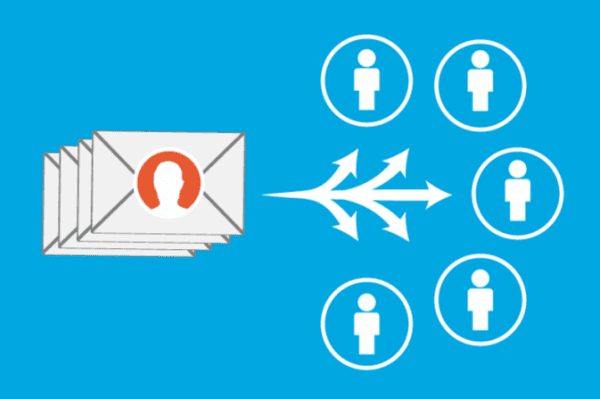
But what if you don't use a CRM?
You can export emails from providers like MailChimp, or even a list you already have. You can also rent email lists from publishers who have your target audience. (Many financial institutions do this already.)
CRM retargeting recap:
Your CRM potentially holds a lot of information about the behaviors of your visitors. Use that data to create unique audience groups to retarget to.
Many times, you'll find the best uplift in performance from targeting old users/visitors that were once hot. This could help reignite them.
Best used on these networks:
- Gmail
- Google Display Network
- X
10. Bulk email retargeting
Staying on the topic of emails, you also have the option to target your email list directly through Google Ads, Facebook, or X.
Google Ads has a feature called Customer Match. Facebook has a feature called Custom Audiences. And X has a feature called Custom Audiences. All of these help you reach your email list effectively.
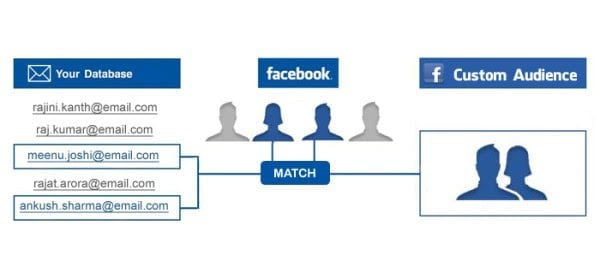
Here's a look at how Facebook Custom Audiences works.
The biggest thing to keep in mind when it comes to bulk email retargeting is the “match rate” of emails to users on a given platform.
Match types between Google, Facebook, and X typically break down like this:
- Google = 50.4%
- Facebook = 48.99%
- X = 10.2%
As you can see, the behemoths of the ad world (Google and Facebook) have such a strong match rate because of the usage of their platforms. Whereas not as many people are on Twitter (or use an email address that matches).
Once you've decided on which platform to use (maybe multiple), you can take advantage of the different types of ads and networks (especially on Google) to get your email list to convert.
Bulk email retargeting recap:
Easily retarget your owned audiences by connecting your email database to your ad campaigns. And, just like any retargeting campaign, don't forget the power of segmenting your audience into specific buckets.
Best used on these networks:
- X
11. Lookalike Audience Retargeting
PPC networks like Google Ads and Facebook can help you reach new people who act like your current website visitors. They analyze behavior patterns and intent from your audience and find similar individuals.
Through hundreds of different factors, you can target these similar audiences as regular retargeting campaigns, even if those people being targeted have never been on your landing page or site.
Google Ads calls it Lookalike segments and Facebook calls it Lookalike audiences.
Once you start creating your retargeting list from your own visitors, Google and Facebook will automatically create similar and lookalike audiences for you to take advantage of.

Lookalike Audience Recap:
Sometimes a similar/lookalike audience is much bigger than your original retargeting list.
Take advantage of it, but tread lightly. Your specific industry can have varying performance when it comes to how accurate and similar the borrowed audience truly performs.
Best used on these networks:
12. Push-Along Retargeting
Do you have a conversion funnel with multiple touchpoints where visitors need help moving to the next step? If so, then push-along retargeting can be your new best friend.
Just like certain keywords can be tracked to show how far down the conversion funnel a visitor is, you can do the same thing with your retargeting ads.
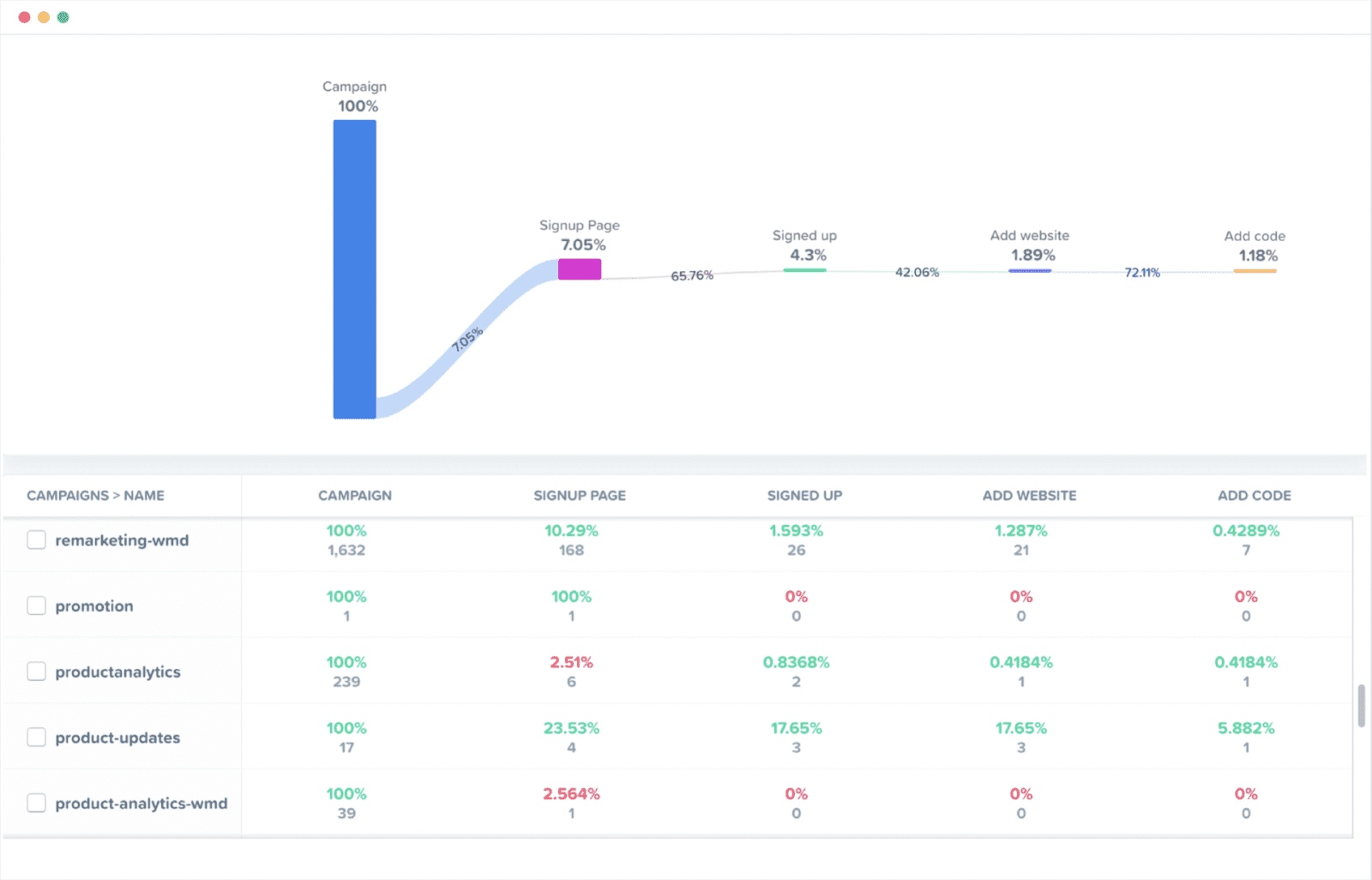
The goal here is to craft ads that hint to the next step the audience should take to get further down your conversion funnel.
Like sequential retargeting, push-along retargeting focuses on actions taken by the visitor in relation to the next step in the conversion process. No time or other external factors are incorporated.
This is a stellar retargeting campaign tactic for SaaS onboarding issues.
Push along retargeting recap:
Make sure your audience sizes are big enough. If you have less than 1,000 visitors in each step of your conversion process, you may not get enough impressions, clicks, or conversions.
Best used on these networks:
- Gmail
13. Geographic Granularity Retargeting
Don’t cast a wide net with your retargeting ads.
If you look inside your PPC account, you should be able to see the geographic locations your visitors are coming from.
Create retargeting ads that are specific to the geography of your retargeting audience. Pair that with a landing page optimized to follow the message match and you could produce higher retargeting metrics.

That's what we did for an international money platform and we were able to increase conversions by 1,118%.
Geographic granularity retargeting recap:
Pick the geographies that have the highest audience count first and start there. The more impressions you get, the higher your chances are for clicks that turn into conversions.
Once a success, repeat the process by creating unique retargeting ads and landing pages from the next highest visitor geography.
Best used on these networks:
- Google Search
- Google Display Network
14. Redirect Link Retargeting
Redirect link retargeting works by attaching tracking pixels to specific links. When someone clicks that link, they’re added to a retargeting audience—even if the link sends them to a page you don’t own or control.
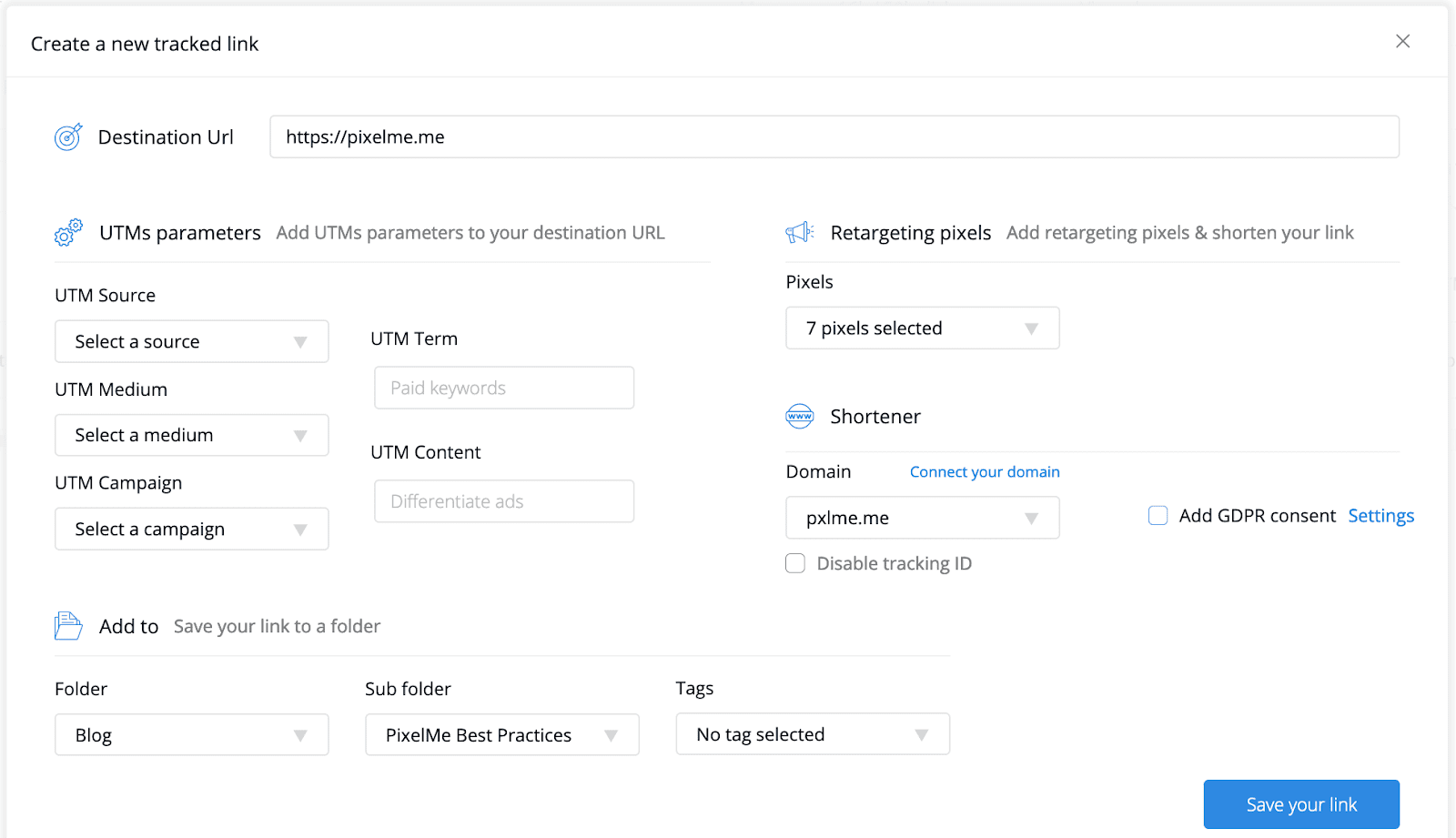
This method is particularly effective for
- Comparison sites: You have a comparison site with multiple affiliate/referral links, in which you want to retarget visitors in an effort to convert them.
- Email signatures: If your company has uniform email signatures, then you can track clicks on certain links and create unique retargeting audiences that way.
- Forums or guest posts: If you write guest posts, you can also build audiences based on links you add to forums or author bio links.
It's supported on platforms like Facebook, YouTube, and Google Display Network, and can even be used securely with SSL variations. Perfect for when you want to reach users navigating outside your direct control.
Redirect Link Retargeting Recap:
Redirect link retargeting is perfect when you want to cookie visitors who are going places they don't control or own.
Best used on these networks:
- YouTube
- Google Display Network
15. RLSA Retargeting
Remarketing lists for search ads (RLSA) is a Google feature for creating specific text ads exclusive to specific retargeting audiences.
RLSAs also allow you to set bid modifiers across search and shopping ads. With these, you can bid more aggressively or passively depending on searches from people who are on your audience list.
Let's say you want to bid on competitor names, but you only want your ads to show if the visitor has been on your site before (shoutout to Bounteous for the idea).
Maybe the visitor comparison shopped in the past but never converted (on your site or your competitors'). A month later, they're researching your competitors by typing in their names to Google.
RLSA audiences can be targeted broadly by keyword selections, among other advantages.
- RLSAs brought World Travel Holdings a 300% increase in conversion rates and 30% increase in ROI. They targeted broad match keywords like “present” and “gift” in addition to their own brand terms.
- A tire company in Germany adding in positive bid modifiers to people who have been on their site in the past but didn't convert. Total sales increased 22% and conversions up 163%.
Long story short, RLSA works wonders for search network targeting.
RLSA Retargeting Recap:
To get your feet wet with RLSA, use regular bid modifiers by adding in your retargeting audience. Select “Bid only” from the “Target & Bid” option. This allows you to be a little more aggressive (or less aggressive) with people who have already been on your site.
Best used on these networks:
- Google Search
- Microsoft Ads Search
16. Anti-Bounce Retargeting
This point is more of a retargeting tactic and not a standalone retargeting campaign (but it could be if you'd like.)
Instead of spending your retargeting budget on people who bounce off your site quickly, focus on those who show real interest.

Now consider your retargeting audience.
If you have a bounce rate between 60-80% or higher, then why would you put 60-80% of your retargeting budget toward people who aren't even remotely interested in what you have to offer?
See where I'm going with this?
To make this happen, you'll want to create a “cookie insertion delay” of a certain amount of time (like 60 seconds or higher).
That way only visitors who stay on your site for that time are added to your retargeting audience.
Anti-bounce retargeting recap:
A bounce isn't necessarily a bad thing.
This tactic is especially great if you have an isolated landing page (with no external links) where all exits are considered bounces.
Best used on these networks:
- Google Search
- Google Display Network
- Gmail
17. Non-Cookie Retargeting
Since the iOS 14 update, mobile browsers have become more anti-advertising, and traditional cookie-based retargeting lost its edge. Enter non-cookie retargeting:
Fingerprint retargeting is similar to device ID retargeting. Certain identifiable pieces of information are used to identify a visitor across different devices.
Without the need for cookies or pixels, advertisers can narrow down cross-device retargeting through data like browser types, installed software, time zones, IP addresses, and more.
Non-cookie retargeting recap:
Know why Google was so in love with the idea of a social network?
Because companies like Facebook are leading the pack for cross-device retargeting. They can do this because you're most likely logged into your Facebook account on desktop and mobile devices.
Best used on these networks:
- Google Ads* (*Targeting or exclusions based on mobile device IDs only works for searches made within the Google app )
18. Dynamic Retargeting
Dynamic retargeting creates image ads at scale so you don't have to individually create hundreds or thousands of product/offer-specific image and text ads.
In the diagram below, you can see the difference and depth of detail a dynamic retargeting ad could have.
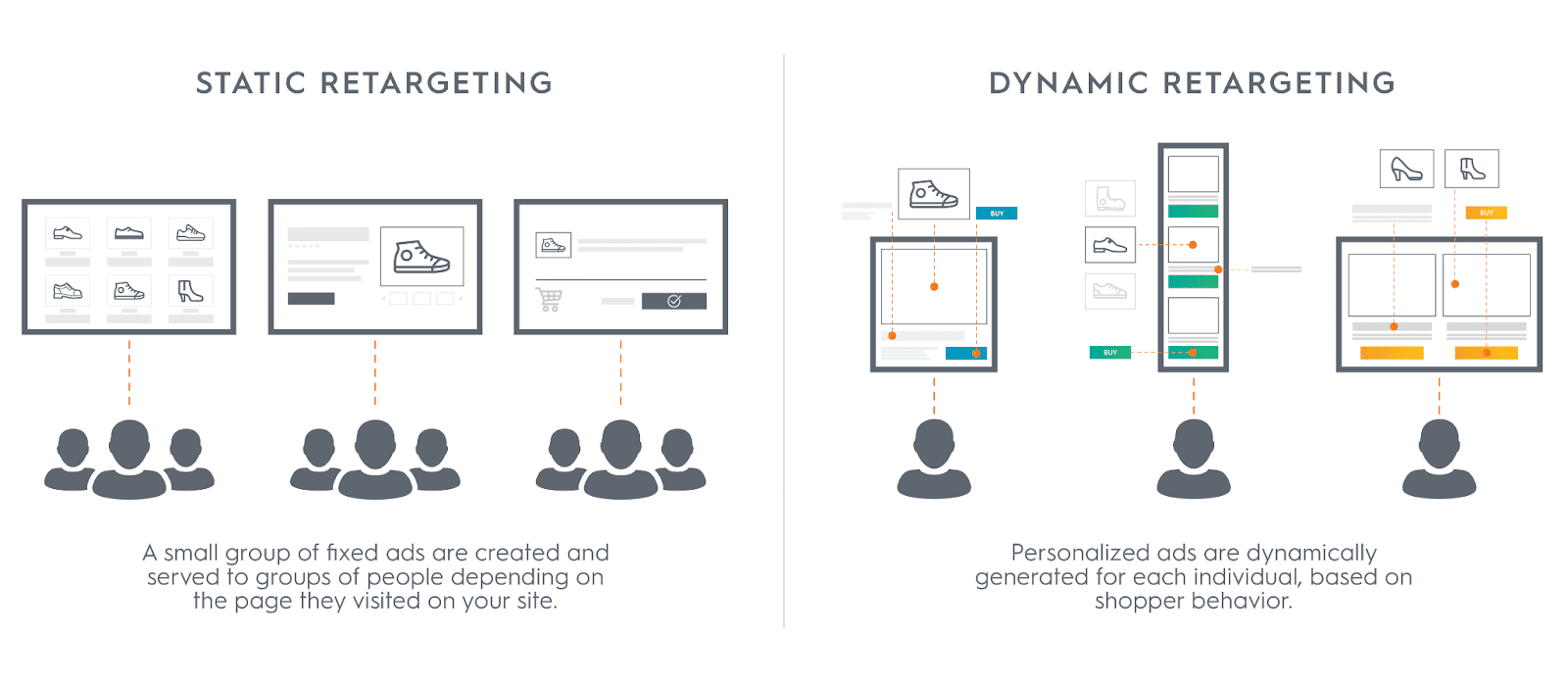
If you're an online retailer with hundreds or thousands of products, then you can use ad templates from providers like Google Ads or AdRoll that grab info like product images, pricing, and availability from your shopping feeds.
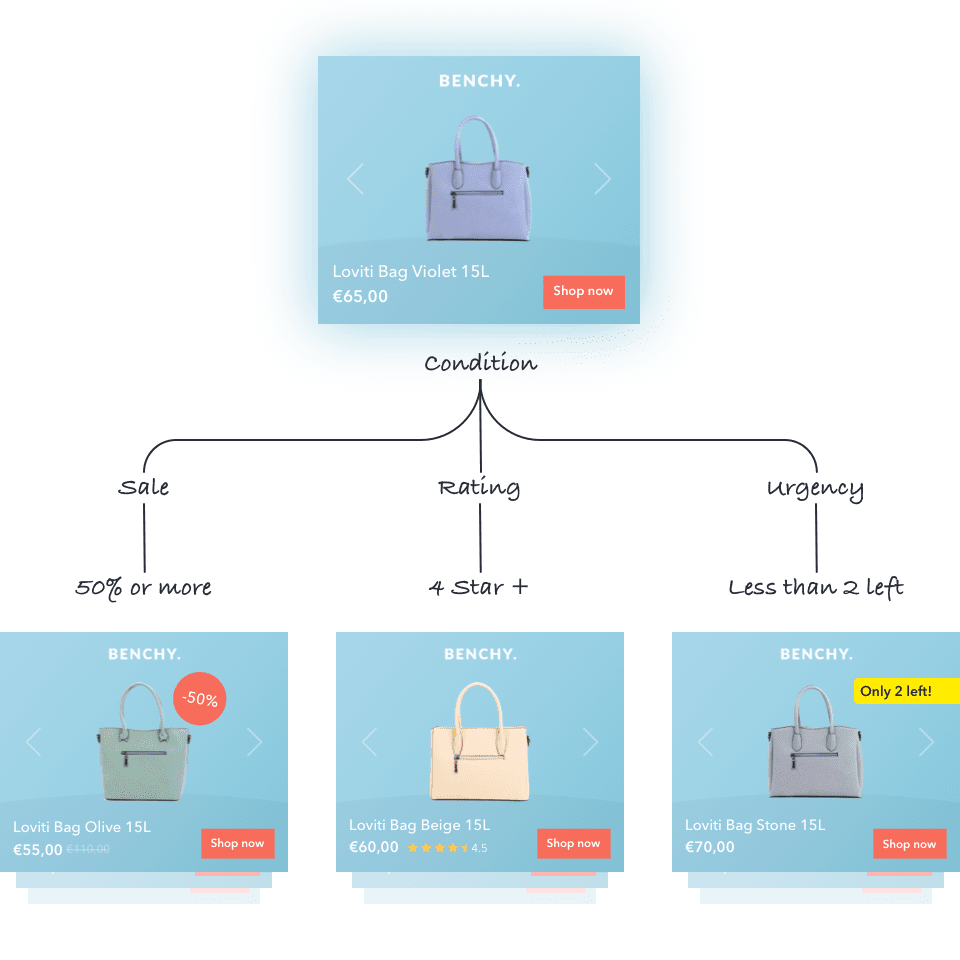
The retargeting cookies take note of which product pages you've visited. Your dynamic retargeting ads only show products that you've shown interest in.
This type of retargeting works well in the travel or hospitality industry for showcasing dynamic ads based on travel routes or vacancies.
Dynamic Retargeting Recap:
Google Ads and other retargeting vendors like AdRoll allow you to create dynamic retargeting ads that instantly showcase ads on the Google Display Network and inside social networks like Facebook and X.
You can then use time-delayed retargeting to showcase stronger offers/discounts depending on the length of the visitor being part of the retargeting audience.
Best used on these networks:
- Google Display Network
- Gmail
- X
19. Content Retargeting
Are you investing quite a bit of money into content marketing?
If so, then a content retargeting campaign could earn trust and gain conversions in the future.
Here's how it works:
- Create a retargeting audience to target people who have been reading a certain blog post or content piece on your site.
- Retarget people who have shown interest in your offer or product.
- Create image and text ads that showcase a complementary piece of content, a piece of content they might like, or, better yet, a soft sell/low threat offer like a free guide.
Here's an example from Rubicon Project's Dax Hamman on the AdExchanger blog:
“A consumer who is looking for information on picking the best mortgage visits citimortgage.com. They could be retargeted with a recommended link, “5 things to watch out for when deciding on a mortgage,” by Citibank on usatoday.com/money.”
In the example above, Citibank is sending visitors to a co-promoted piece of content on USAToday. This is something you can do with Forbes BrandVoice as well.
But if you're not looking to shell out at least $50,000 to make that happen, then you can always bring the retargeted visitor back to content that's hosted on your own properties.
Content retargeting recap:
Content retargeting is used to nurture and increase trust between visitors and your brand. It doesn't necessarily go for a direct conversion like so many other retargeting campaigns do.
Content retargeting works well for industries and verticals that have long buying cycles (i.e. the conversion isn't cheap to the visitor).
Having your brand front and center with the goal of educating the visitor instead of getting them to buy can make you come across much more trustworthy than your competitors.
Best used on these networks:
- Google Display Network
- Google Search
20. Referral Retargeting
Your customer didn’t go for the upsell, cross-sell, or down-sell? No problem—turn them into a referrer instead:
- After a purchase, create a new audience from your post-conversion URL and group them into a “referral bucket.”
- Show them ads highlighting what they’ll gain for referring others (e.g., “Get 10% off for every friend who joins!”).
- Direct them to a simple, user-friendly landing page designed for easy sharing with their network.
Take inspiration from companies like Uber, who excel at referral marketing.
Referral retargeting recap:
Your business type determines the type of referral virality you can expect.
B2C companies usually have great reach and potential compared to B2B companies who deal with lower customer volumes.
Best used on these networks:
- Google Display Network
Although you can create specific retargeting audiences within social platforms like Facebook and X, I tend to go with retargeting providers that allow me to target multiple networks within one dashboard.
AdRoll is one of the leaders of social retargeting, along with Shoelace, Criteo (and others), that allow you to retarget your visitors on Facebook, X, and other publisher websites.
LinkedIn also has their own solution that you can use for retargeting on their network.
Many traditional PPC channels like Google Ads and Bing Ads don't have access to ad inventory on social networks.
Go directly to the social network or use 3rd party tools to keep as many of your campaigns under one dashboard.
Best used on these networks:
- X
21. Competitor Retargeting
You read that right, and there's a way to do it.
AdRoll, Facebook, and Google Ads all offer the ability to target audiences that have shown intent or browsing behavior that took them to competitor sites. (Almost like the “similar audiences” we've covered earlier in this post!)
On Facebook, for example, you can target competitor brands as Interests if their page has a large enough audience.
In addition to what's mentioned above, you can use these Google Ads tactics as well:
- RLSA targeting by using competitor names as keywords
- Using Custom Intent audiences to target competitor domains through Gmail, the Google Display Network, and YouTube
- Google Search Network with Display Expansion campaigns – this helps you showcase display ads based on keywords that have been typed into Google as a prerequisite for your display ads to show.
Competitor Retargeting Recap:
No respectable ad platform will launch a competitor retargeting solution in its purest sense (placing your retargeting code on competitor sites).
But there are ways you can mix and match to get similar/desired results.
Best used on these networks:
- Google Search
- Google Display Network
- YouTube
22. Partner Retargeting
Also known as “let's share each other's retargeting pixels.” Partner retargeting is basically the partnership between two sites that allow use of each other's pixels.
You may find that a website that only sells ketchup would be interested in retargeting visitors from a site that only sells mustard, and vice versa.
As a better (and more realistic example) you could find partner retargeting between airlines and hotels. Both are separate companies but have complementary offers that go hand-in-hand.
SharpSpring Ads Connect does just this.
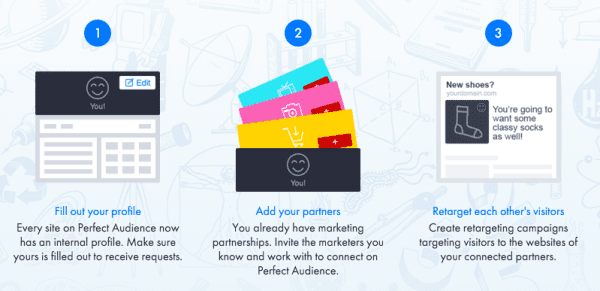
Oh, and did I mention that the costs of targeting visitors like these are on average 80% cheaper than regular Google Ads retargeting audiences?
Partner retargeting recap:
Like renting or buying email lists, partner retargeting lets you borrow other websites visitors for a fraction of your regular retargeting costs.
Best used on these networks:
- Google Search
23. Re-Engagement Retargeting
Do you have outdated and super-old visitors with no activity who are still cookied? Or maybe you still have their email address?
If so, then you may benefit from re-engaging many of your old visitors to learn why they became unengaged.
This tactic is borrowed from the email marketing world, but works just as well with retargeting ads too.
In a post of 15 email re-engagement examples, Impact shows us how well-known brands try to get you to come back, like Duolingo:
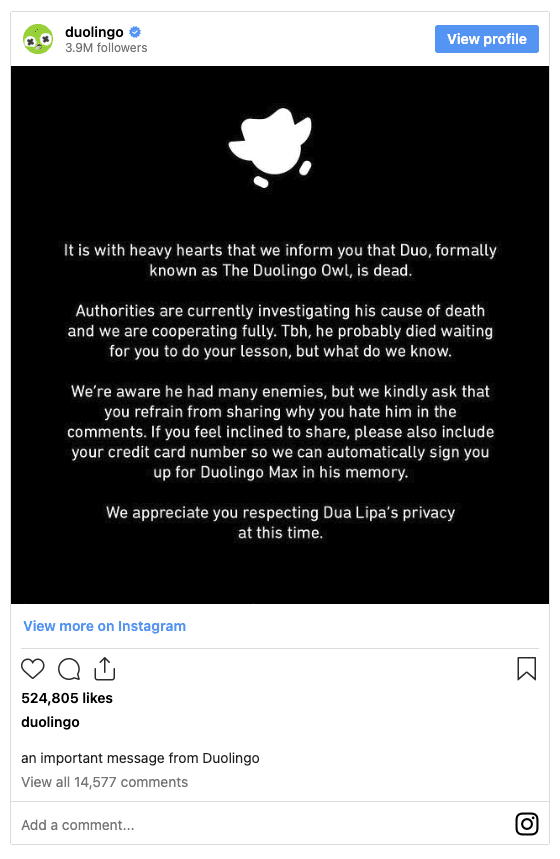
With this type of retargeting, you can decide to keep sending emails via email channels, OR, you could upload those unengaged email addresses into Google Ads or Facebook to serve up companion ads as well.
Re-engagement retargeting recap:
Your past visitors already know you. Remind them why they should love you again.
Use re-engagement retargeting to breathe new life into old subscribers and visitors with new offers.
Best used on these networks:
- X
24. YouTube Retargeting
Being the second largest search engine in the world, YouTube is a hotbed for insanely cheap cost per views with their TrueView capabilities.
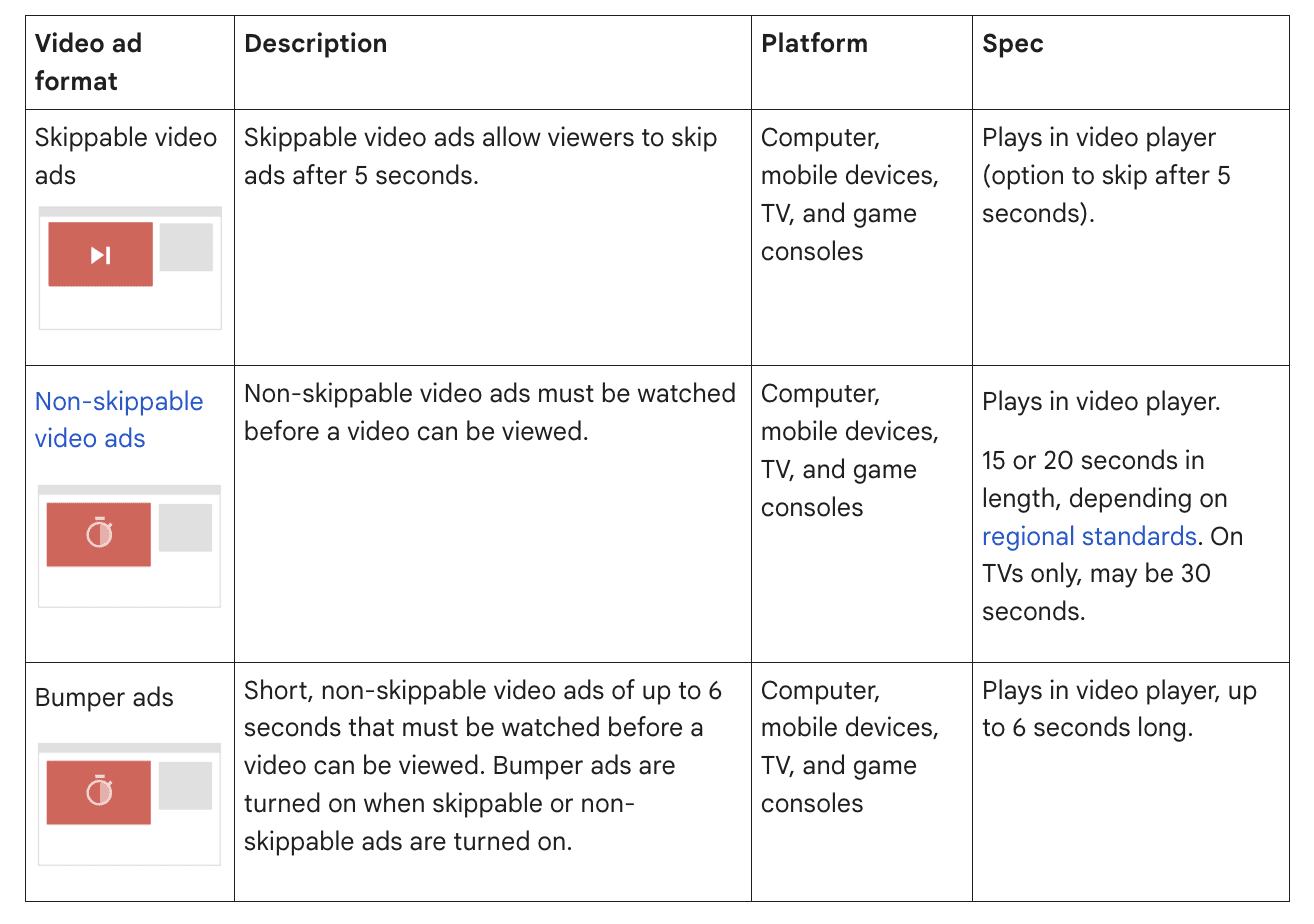
You can now use video ads for retargeting, just like image or text ads, with more audience data to refine your targeting.
While it's not as quick or inexpensive to shoot an entire video as it is to write a text ad, you can still get creative in your approach to video ad testing.
Since most viewers skip ads after 5 seconds, focus on testing and perfecting the opening moments of your video for maximum impact—no need to reshoot the entire ad.
By testing different opening sequences, you can make the biggest impact on view rates and other actions that happen further down the funnel.
In a United Airlines case study, they used YouTube remarketing to reach people who had already searched for flights and then encouraged them to buy. This led to an additional 17,000 booked flights and 52% of conversions attributed to YouTube were click-through conversions directly from the ad.
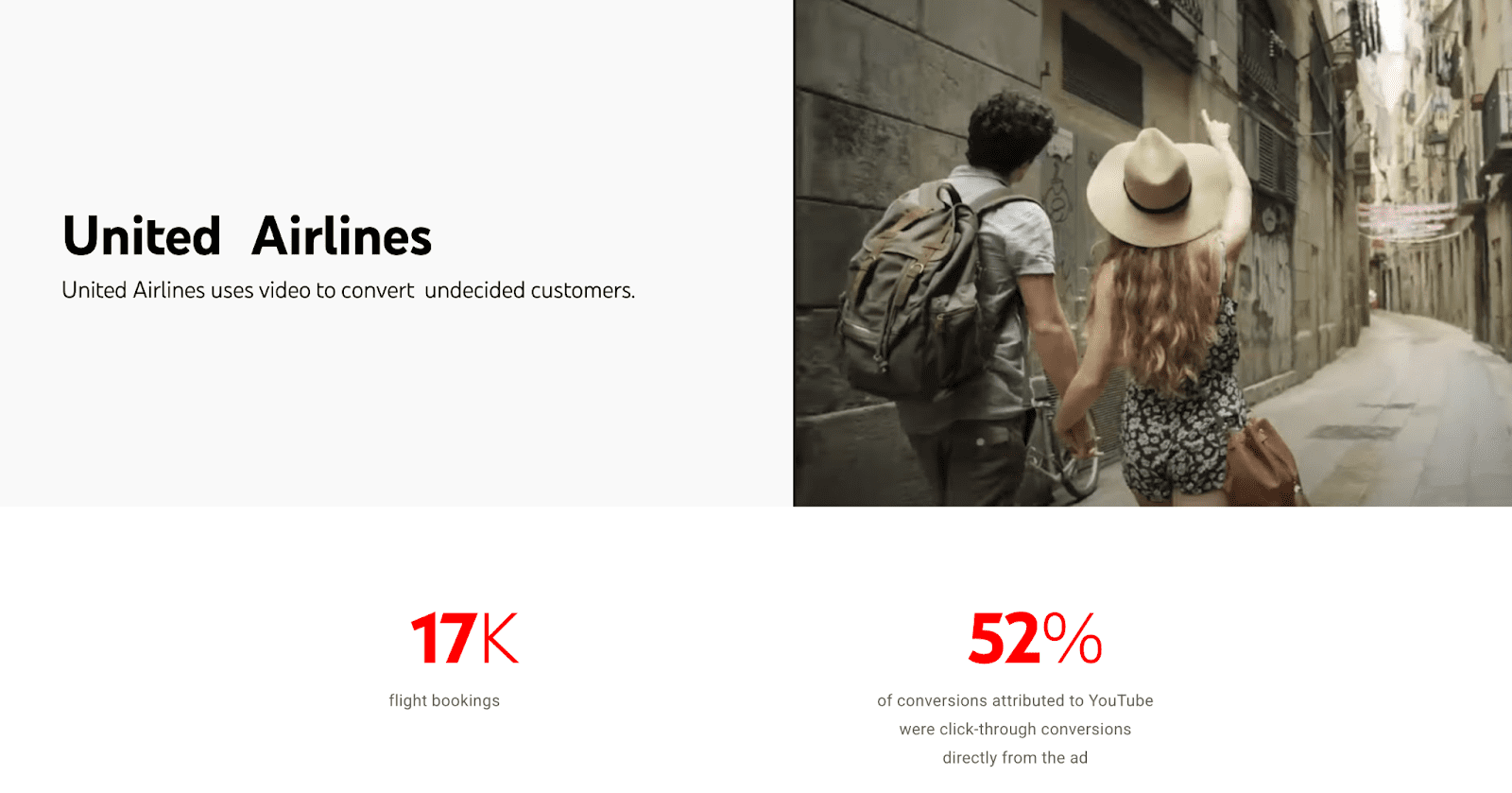
YouTube retargeting recap:
In addition to regular display and social retargeting, YouTube offers a 3rd channel where your audience may be hanging out.
If you're curious about testing that channel, start with a low cost video that proves an ROI before investing further.
Best used on these networks:
- YouTube
25. Abandoned Cart Retargeting
If you're an eCommerce store, then you probably have some abandoned carts. The stats are as high as 70%.
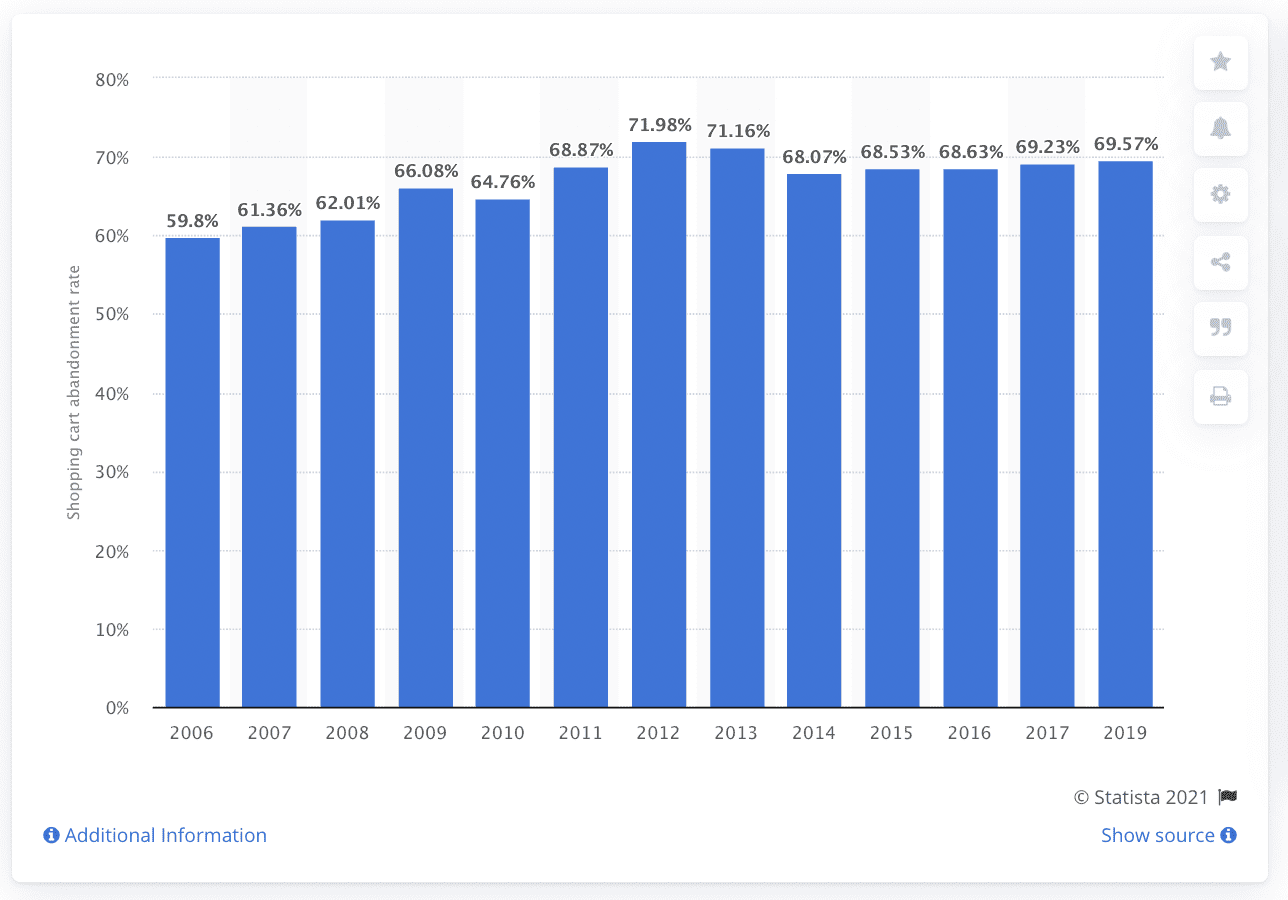
And like any business owner, your goal is to turn those abandoned carts into sales. One way to do that is to use email retargeting that takes visitors back to their saved carts.
Cart recovery retargeting can have a huge impact on your overall revenues, as shown in the chart with actual results from a Rejoiner campaign.

Tools like Rejoiner and Klaviyo are out-of-the-box solutions you can implement in your shopping cart right away.
The email retargeting tools capture the email address people type in on your checkout page, but register whether or not the person actually went through with the purchase.
If they don't finish the purchase, an automatic email will be sent to them with pictures of the shopping cart items, along with a call to action to bring them back to buy.
Abandoned Cart Retargeting Recap:
Shopping cart recovery is a huge deal in the eCommerce space. And without having to offer discounts or specials, you can recover quite a few lost sales by reminding people that they didn't finish their purchase.
Split testing subject lines and email layouts should be one of your main focuses after you're up and running.
Best used on these networks:
- Rejoiner
- Klaviyo
26. CPA Retargeting
Cost Per Acquisition Retargeting offers a mix of different bidding options.
You have the option to
- Pay per click (CPC bidding)
- Pay per thousand impressions (CPM bidding)
- P pay per conversion (CPA bidding)
While it's not guaranteed, you can go the route of Google Ads and set CPA bidding targets. You could apply this tactic and pair your remarketing audiences with
- Search
- Discovery
- YouTube
- Shopping campaigns
On the other hand, you could also take advantage of one of Google's newer bidding strategies: pay-per-conversions bidding. Right now, this feature is only available with Smart Display or Standard Display campaigns. But it's exactly what it sounds like. Instead of paying per impression or per click, you only pay when you get a conversion.
CPA retargeting recap:
If you'd like to take advantage of pay-per-conversion bidding, note that it comes with a couple of caveats:
- Your account must have more than 100 conversions in the last 30 days
- 90% of your conversions need to have occurred within less than 7 days after someone clicks your ad
Pay-per-conversions follows looser rules for budgeting than most Google Ads campaigns. Pay-per-conversion campaigns will stick to your monthly budget, but could spend over 2x your daily budget on an individual day. Don't let this catch you off guard!
Best used on these networks:
- Google Display Network
27. Mobile App Retargeting
If you're trying to retarget people for app downloads or get people to take advantage of an offer within your app, consider mobile app retargeting.
When it comes to user bases in the mobile app world, retargeting has proven to be the cheapest and most effective way to acquire new users.
Someone may already have visited your app's site or landing page but didn't download. In this scenario, you'll want to retarget them with ads that try to get them to download the app.
If someone has already downloaded the app, then your next retargeting goal may be to get them to make an in-app purchase or increase their overall engagement.
Regardless of your goals, mobile app retargeting can be taken advantage of via traditional ad platforms like Google Ads. These platforms provide more insight if you integrate them with your app's SDK (for conversion tracking purposes).
Mobile app retargeting recap:
As privacy changes evolve, companies continue to develop new mobile ad formats. Apple’s iOS 14 update significantly impacted ad measurement and reporting, especially for users who opted out of tracking via App Tracking Transparency (ATT).
To adapt, use Facebook’s SDK to personalize ads and ensure you can still track app conversion events.
Further reading: How iOS14 Impacts Facebook Ads (And How To Get Around It)
Best used on these networks:
28. Smother Retargeting
The name almost gives this retargeting campaign away.
A lot of best practices tell you to use frequency caps (the number of times a single visitor will see your retargeting ad over a given period of time) to not annoy visitors.
But while that's correct, who's to say that you can't break the rules and get a great ROI from it?
When it comes to smother retargeting, you only have one goal: hit your visitors as often as possible.
Use multiple retargeting networks like Google Ads, Shoelace, and Criteo to retarget your ads anywhere your visitor might go (third-party sites, Facebook, X, etc.)
Then take that same approach with cart abandonment (if you're an eCommerce shop) through email retargeting as well.
You can then take it one step further and create this type of audience around people who almost converted. Maybe they started filling out your lead gen form, or they were on the checkout page, but didn't buy.
Smother retargeting recap:
Blitzkrieg for a short period to see if your “time to convert” drops when visitors are added to your retargeting audience.
Make sure you have an option to retarget to all the potential areas a visitor can go beyond your site and landing page.
Best used on these networks:
- All
29. Product Reminder Retargeting
Retargeting isn’t just about maintaining brand awareness—it’s also a great way to remind users of specific products they’ve shown interest in.
Why not remind them about the exact product they looked at before?
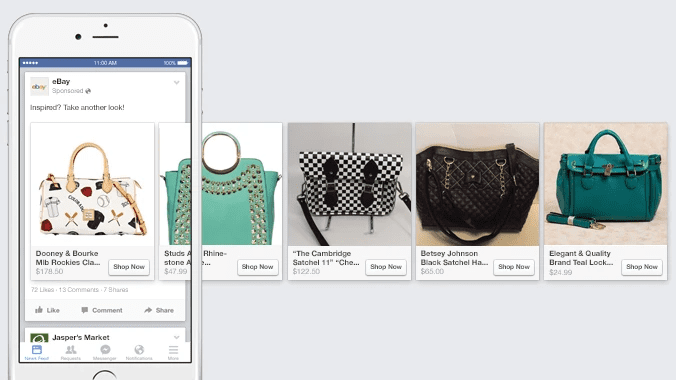
Displaying items—or categories of items—that a visitor has previously viewed is the best way to grab their attention and make the ad more personal.
And if there's one thing you've learned thus far, it's that the more personal your ads, the better.
Product reminder retargeting recap:
Try targeting visitors within a certain time-frame with ads of previously viewed items. Make them remember why they were interested in the product in the first place and you should see your end-goal conversions scale as well.
Best used on these networks:
- Google Display Network
Your Next Steps
The goal of retargeting is simple: bring your ideal customers back to your site through ads that build awareness by showing up wherever they are.
Psychologically, retargeting works by familiarity; users are more likely to engage with ads from brands they know and trust.
Monetarily, if retargeting increases conversions, and conversions make you money, then retargeting = more money.
It's math.
In addition to that, here are a few other things to keep in mind:
- Frequency caps: Limit people to your ad's visibility so your message doesn't dilute.
- Burn pixels/URLs: Once people have converted, move them to a new audience. Don't waste impressions on people who can't convert again.
- Audience diversification: Many of the tactics we talked about today involve unique audience segmentation. Take advantage of that.
Now you have the strategy. Take it and do great things with it.

